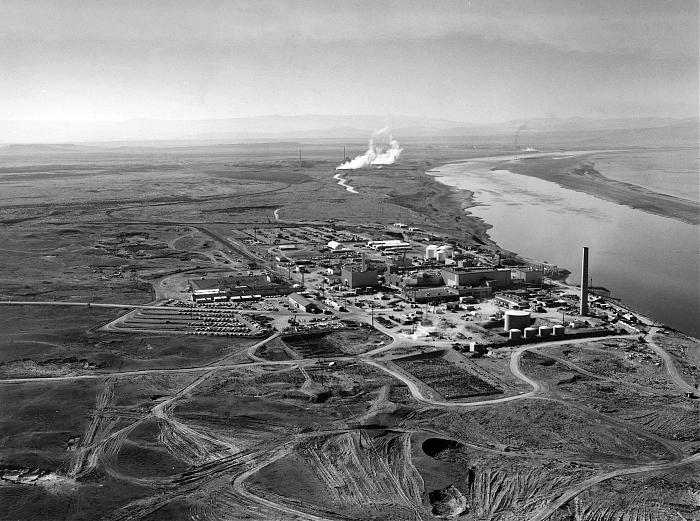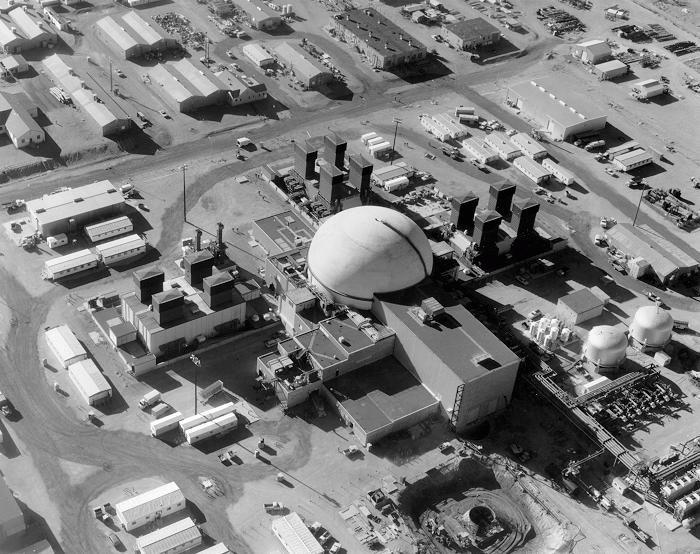Hanford Nuclear Site: The Untold Story Behind America's Secret Atomic Empire
Picture this: a vast, desolate desert in Washington State where secrets of unimaginable power have been hidden for decades. The Hanford Nuclear Site isn't just another abandoned facility; it's a piece of history that shaped the modern world. From its role in the Manhattan Project to its current status as one of the largest environmental cleanup projects on the planet, this place has stories that need to be told. So, buckle up because we're diving deep into the heart of Hanford's past, present, and future.
When most people think about nuclear history, they might immediately jump to Hiroshima or Nagasaki. But what about the place where it all began? The Hanford Nuclear Site played a pivotal role in creating the atomic bomb that ended World War II. It's not just a relic of war; it's a symbol of human ingenuity, ambition, and the consequences of our actions.
As we peel back the layers of this mysterious site, we'll explore its fascinating history, the monumental challenges it faces today, and the potential solutions that could reshape its legacy. Whether you're a history buff, an environmental advocate, or just curious about the secrets lurking beneath the surface, this article has got you covered.
Read also:Cooper Manning The Man Behind The Fame
Table of Contents
The History of Hanford Nuclear Site
Hanford's Role in the Manhattan Project
Environmental Impact and Cleanup Efforts
Challenges Facing Hanford Today
The Future of Hanford Nuclear Site
Read also:Ricardo Lugo Net Worth Unveiling The Success Story Behind The Numbers
Technological Innovations in Cleanup
Government Involvement and Oversight
The Legacy of Hanford Nuclear Site
The History of Hanford Nuclear Site
Back in the 1940s, the world was at war, and the race to develop nuclear weapons was in full swing. Enter Hanford, a remote area in southeastern Washington that became the perfect location for a top-secret mission. The U.S. government snapped up around 586 square miles of land, displacing local communities and farmers to make way for what would become the Hanford Nuclear Reservation.
Construction began in 1943, and within two years, the site was up and running. It wasn't long before Hanford produced the plutonium used in the "Fat Man" bomb that devastated Nagasaki. But the story doesn't end there. Hanford continued to churn out plutonium throughout the Cold War, playing a critical role in the arms race between the U.S. and the Soviet Union.
Why Hanford Was Chosen
So, why Hanford? Well, it had a few key advantages. First, its remote location made it less vulnerable to attack. Second, the nearby Columbia River provided plenty of water for cooling reactors. And third, the sparsely populated area meant fewer people would be affected by the project. Of course, hindsight being 20/20, we now know that these "advantages" came with a hefty price tag.
Hanford's Role in the Manhattan Project
The Manhattan Project was the brainchild of some of the greatest scientific minds of the 20th century. Hanford was one of three main sites involved in the project, alongside Los Alamos and Oak Ridge. While Los Alamos focused on weapon design and Oak Ridge handled uranium enrichment, Hanford took on the plutonium production.
In 1945, the B Reactor at Hanford became the first full-scale plutonium production reactor in the world. It was a groundbreaking achievement, but it also marked the beginning of a long and complicated relationship between science, politics, and the environment. The reactors at Hanford weren't just producing plutonium; they were also generating massive amounts of radioactive waste.
Key Players in the Manhattan Project
- Robert Oppenheimer – The scientific director of the project
- General Leslie Groves – The military leader overseeing operations
- Enrico Fermi – A physicist who contributed to reactor design
Nuclear Production at Hanford
During its peak years, Hanford was home to nine nuclear reactors and five plutonium processing plants. These facilities worked around the clock to produce the materials needed for the U.S. nuclear arsenal. But all that production came at a cost. The site generated millions of gallons of liquid waste and hundreds of thousands of tons of solid waste, much of which was poorly managed or improperly stored.
One of the biggest challenges was dealing with the highly radioactive waste. In the early days, much of it was simply dumped into trenches or injected into the ground. It wasn't until the 1960s that more sophisticated storage methods were introduced, but by then, the damage had already been done.
Production Highlights
Here are some key stats about Hanford's production:
- Produced over 67 metric tons of plutonium
- Operated for nearly 40 years
- Generated over 56 million gallons of high-level radioactive waste
Environmental Impact and Cleanup Efforts
Fast forward to today, and Hanford is now synonymous with environmental disaster. The site is home to one of the largest and most complex cleanup projects in the world. The U.S. Department of Energy, along with contractors and regulators, is working tirelessly to contain and remediate the contamination.
The cleanup efforts involve a wide range of activities, from stabilizing leaking tanks to treating contaminated groundwater. It's a massive undertaking that requires cutting-edge technology, innovative solutions, and a lot of patience. The goal is to make the site safe for future generations, but it's a process that could take decades and cost billions of dollars.
Cleanup Challenges
- Dealing with aging waste tanks
- Addressing groundwater contamination
- Managing the disposal of radioactive materials
Challenges Facing Hanford Today
While progress has been made, there are still plenty of hurdles to overcome. One of the biggest challenges is the sheer volume of waste that needs to be addressed. Some of the tanks that store the waste are over 70 years old and have started to leak, posing a significant risk to the environment.
Another issue is the cost. The cleanup project is already one of the most expensive in U.S. history, and budget constraints could delay or derail some of the planned activities. Plus, there's the human factor. Many workers at the site have reported health issues related to exposure to hazardous materials, raising concerns about safety protocols and worker protection.
Solutions on the Horizon
Despite the challenges, there are reasons for optimism. New technologies are being developed to address some of the most pressing issues. For example, the Waste Treatment and Immobilization Plant (also known as the "Vit Plant") aims to turn liquid waste into glass through a process called vitrification. It's a promising solution, but it's still years away from full-scale operation.
The Future of Hanford Nuclear Site
So, what does the future hold for Hanford? While it's unlikely that the site will ever return to its former glory, there are opportunities for repurposing some of the land. For example, parts of the site could be used for renewable energy projects or conservation efforts. There's also potential for Hanford to become a hub for nuclear research and development, leveraging its existing infrastructure and expertise.
But before any of that can happen, the cleanup must continue. It's a long and arduous process, but one that's essential for protecting the environment and public health. The lessons learned from Hanford could also inform future nuclear projects, ensuring that history doesn't repeat itself.
Technological Innovations in Cleanup
Technology plays a crucial role in the Hanford cleanup effort. From drones that monitor waste sites to robots that navigate contaminated areas, innovation is driving progress. One of the most exciting developments is the use of artificial intelligence to analyze data and identify potential risks. AI can help predict where contamination might spread and suggest the best strategies for containment.
Another promising area is bioremediation, which uses microorganisms to break down harmful substances in the environment. While still in the experimental stage, this approach could offer a more natural and sustainable way to address some of the challenges at Hanford.
Impact on Local Communities
The Hanford Nuclear Site has had a profound impact on the communities surrounding it. On one hand, it created jobs and economic opportunities for thousands of people. On the other hand, it exposed many residents to radiation and other health risks. The legacy of Hanford is a complex one, filled with stories of sacrifice and resilience.
Efforts are underway to engage with local communities and ensure that their voices are heard in the cleanup process. Public outreach programs, educational initiatives, and partnerships with tribal groups are just a few examples of how stakeholders are working together to address the challenges at Hanford.
Government Involvement and Oversight
The U.S. government has a vested interest in the success of the Hanford cleanup project. Not only is it a matter of national security, but it's also a question of accountability. The Department of Energy, in collaboration with the Environmental Protection Agency and the Washington State Department of Ecology, oversees the various aspects of the cleanup.
Transparency is key to maintaining public trust. Regular updates, public meetings, and independent audits help ensure that the project stays on track and meets its goals. Of course, there's always room for improvement, and ongoing dialogue between government agencies and stakeholders is essential for achieving the best possible outcomes.
The Legacy of Hanford Nuclear Site
Hanford Nuclear Site is more than just a piece of history; it's a reminder of the power and responsibility that comes with scientific discovery. It's a place where innovation and ambition collided with the harsh realities of war and environmental degradation. As we continue to grapple with its legacy, we must also look to the future and learn from the mistakes of the past.
So, what can we take away from Hanford? First, the importance of responsible stewardship when it comes to nuclear technology. Second, the need for collaboration and transparency in addressing complex environmental issues. And finally, the value of perseverance and determination in the face of seemingly insurmountable challenges.
Final Thoughts
As we wrap up this journey through the Hanford Nuclear Site, I hope you've gained a deeper appreciation for its significance and the challenges it presents. Whether you're inspired to learn more about nuclear history or simply want to stay informed about the cleanup efforts, there's plenty to explore. So, drop a comment, share this article, or dive into some of the resources listed below. Together, we can keep the conversation going and help shape the future of Hanford.
References
For those who want to dig deeper, here are some reliable sources:
- Hanford.gov – Official website of the Hanford Nuclear Site
- U.S. Department of Energy – Information on energy and environmental initiatives
- Environmental Protection Agency – Resources on environmental protection and cleanup efforts


